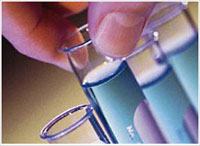Bacteria Growing on Human Fingertips Distinguish One Person from Another
According to new study, scientists have shown that the kind and number of bacteria growing on our fingertips can be used to distinguish one person from another. And these differences could be used as a forensic tool, since we leave behind some of these bacteria when we touch things, and those bacteria can be used for identity purposes.

Most of the time, the DNA used for legal evidence is human DNA. But scientists in Colorado think DNA evidence from bacteria may someday finds its way into the courtroom, NPR reports.
The concept, outlined in a paper in the Proceedings of the National Academy of Sciences, relies upon the fact that human beings leave a trail of bacteria on objects they touch and that the mix of microbes on each person's hand is highly individualized.
"There's a rain forest of bacteria on your skin," said lead author Noah Fierer, an assistant professor of ecology and evolutionary biology at the University of Colorado at Boulder. A human hand can contain on average about 100 different species of bacteria, he said, and only about 13% of that makeup is shared between any two people, Los Angeles Times reports.
Knowing this fact, gives investigators a new method of tracking criminals, and in a study of the method, researchers were correct 75 to 90% of the time
“Each one of us leaves a unique trail of bugs behind as we travel through our daily lives. While this project is still in its preliminary stages, we think the technique could eventually become a valuable new item in the toolbox of forensic scientists,” said lead author Noah Fierer of the University of Colorado.
The researchers presented their study findings in the Proceedings of the National Academy of Sciences, DbTechNo informs.
Subscribe to Pravda.Ru Telegram channel, Facebook, RSS!


